Water is amongst the most common liquids found on our planet and throughout organic life forms, making up the vast majority of the human body. In the culinary world, ice is used for a massive variety of purposes, ranging from long-term storage to temperature control for drinks and desserts.
As such, it is not an uncommon need for home chefs and restaurants to require a constant supply of ice. Many factors come into play when determining the exact length of time it would take to convert water into ice, however, and any savvy cook will find it wise to understand what exactly is occurring when they are freezing water.
Because there are such a wide number of factors that can shorten or lengthen the amount of time it takes in order to freeze water, it is very difficult for a home chef to determine the exact moment that their water will be completely frozen. However, assuming that the water is relatively pure and there is no excess pressure or other environmental factors interfering, water will freeze within two hours at temperatures of 32°F1.
At What Temperature Does Water Begin to Freeze?
Molecules begin to exhibit differing behavior from their norm when subjected to either of the extreme ends of temperature. Solids, depending on their particular compound, may sublimate under high heat, gasses may condensate if subjected to a sudden change in temperature, and water will crystallize when placed at temperatures of 32°F, otherwise known as the average temperature of most commercial freezers.
The freezing effect of water is, in fact, the shaping of tetrahedrons by the individual water molecules at a microscopic level.
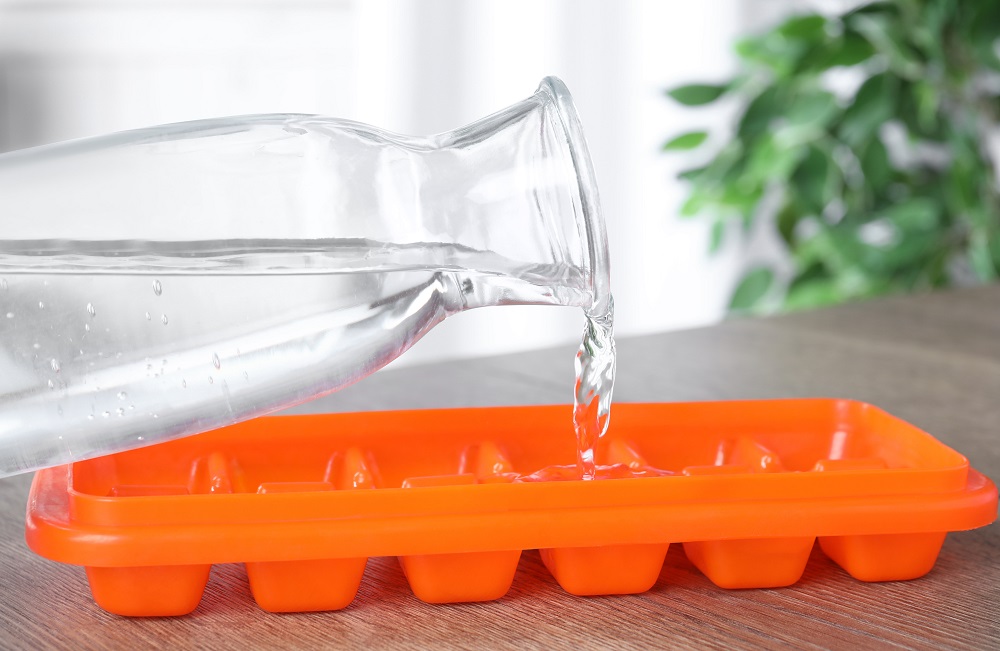
This causes the water to expand as the molecules no longer move freely and instead develop a rigid structure capable of withstanding mechanical pressure.
While this occurs at 32°F in normal conditions, water may remain in its liquid form if certain factors are present, such as the presence of salt or other additives that may lower the freezing temperature of water as well as if the water is being frozen in a high-pressure environment.
Can Water be Frozen Instantaneously?
Yes. Should you need to freeze water in as little time as possible, it is possible to snap-freeze a bottle of water so long as it remains relatively free of impurities and is contained in an air-tight vessel.
Simply place the bottle or container of water in a bowl of ice and salt. Replace this salt and ice mixture every thirty minutes or until the temperature within the bowl begins to rise beyond 17°F.
This process is performed in order to achieve what is called a “freezing point depression” wherein the water will remain in its liquid state until a sufficient source of destabilizing energy is present.
After approximately two hours, simply remove the bottle or container of water and thump it against the counter. This will release heat energy throughout the water and cause an instantaneous (though imperfect) freeze.
Keep in mind that the vast majority of the bottle must remain submerged and in physical contact with the ice as much as possible.
This will also likely not work for water that has an excess number of impurities in it, as these extraneous additives will lower the freezing point of water as well as disrupt the lattice-structure of the water once crystallized.
Will Salting Water Affect its Freezing Temperature?
Much like the previous section mentioned, the presence of salt aids in lowering the exact temperature of which water freezes at. Referred to as a freezing point depression, adding salt to ice will likely cause it to melt and prevent it from refreezing unless the temperature is correspondingly lowered as well.
In the event that you wish to cool water to below 32°F without it freezing into a solid, such as in the case of chilling broth or cooking water, you may wish to add a certain amount of salt so long as it does not affect the taste of the water prior to cooking.
Keep in mind that even in the presence of salt, water is still perfectly capable of freezing if the ambient temperature that it is subjected to is low enough to overcome the anti-freezing effect of salt. As there is no accurate way to gauge exactly what temperature this will occur at, it is best to err on the side of caution.
Does Pressure Affect How Water Freezes?
Yes. As pressure affects all of water’s molecules in a uniform fashion, it is a confirmed fact that water’s freezing point will lower at higher atmospheres of pressure.
In layman’s terms, this means that in the correct environment, water will not freeze. If your goal is to produce ice, it is important to place it in a container that will not produce increased levels of pressure, as this will prevent the water from freezing, or even cause ice to sublimate if the pressure is strong enough.
Does Altitude Affect How Water Freezes?
As altitude is practically atmospheric pressure from a chemistry stand-point, the freezing point of water is found to be lower at sufficiently high enough altitudes. However, this is extremely negligible, as the pressure produced by being present at high altitudes is not sufficient enough to cause any sort of dramatic change in water’s freezing temperature.
Although, if one is utilizing a freezer with extremely specific temperature-control, being present in an open container without its own internal pressure will cause the water to remain liquid at the exact temperature of 32°F.
If present at the summit of a mountain or even in an airplane, this may be accounted for by lowering the temperature of the freezer by a single degree. At 31°F, the freezing point depression produced by atmospheric pressure may be ignored.
Alternatively, one may also keep the water sealed in an air-tight container made of a material strong enough to maintain differing pressure. If sealed at normal atmospheric pressure, water should retain its ordinary freezing temperature when brought up to high altitudes, so long as the pressure is not released beforehand.
References
1. Pedersen UR, Costigliola L, Bailey NP, Schrøder TB, Dyre JC (August 2016). “Thermodynamics of freezing and melting”. Nature Communications. 7 (1): 12386
2. Ott JB, Boerio-Goates J (2000). “Chemical Thermodynamics: Advanced Applications.” Academic Press

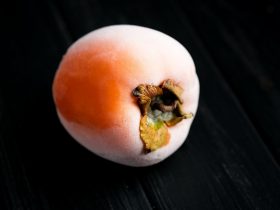
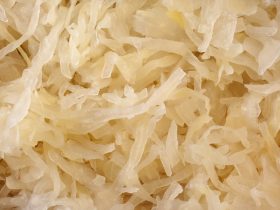
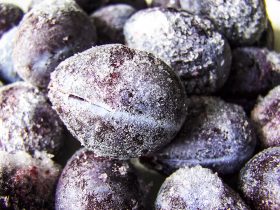
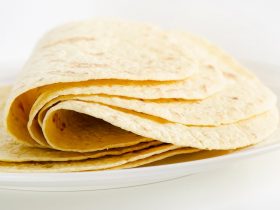
Hi, I'm Dom
Dom Eats was started to help other people fall in love with food. While cooking can feel intimidating, it doesn't have to be.